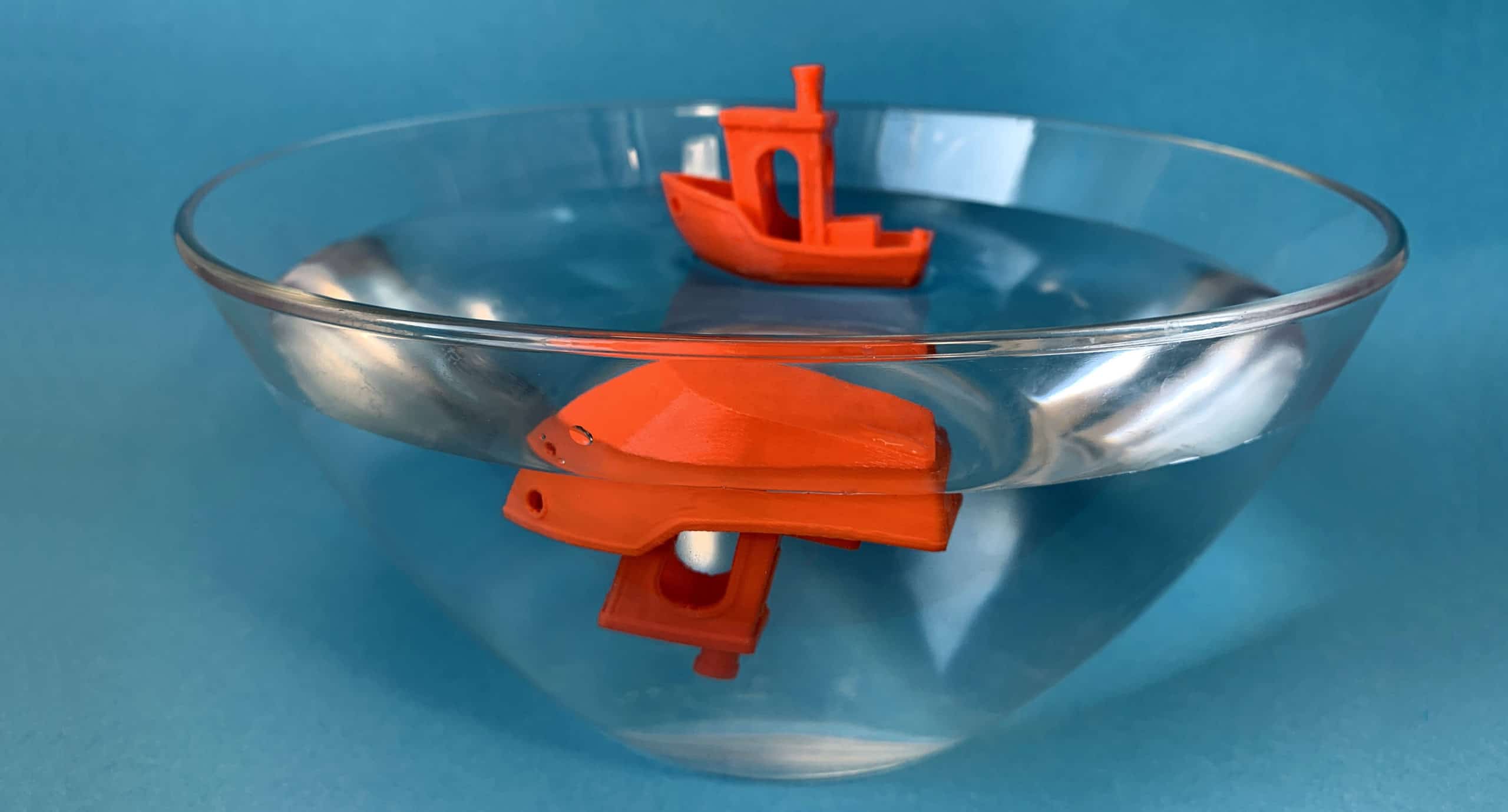The Biggest Issue Of The 3D Printing Industry Has Been Solved: 3D Benchy Can Now Float!
How to make a Benchy float
Up north in our currently quite cold and dark offices in Denmark, we did a little tongue in cheek experiment.
We used a recently developed feature in our software to solve an issue that has been bugging us for quite long. You see, the 3D printing industry’s favorite little boat has a big problem. It’s quite bad at, well, being a boat.
So how did we do it?
When it comes to additive manufacturing, what’s inside matters as much as the outside.
Most 3D printed objects are not solid. The inside of the object is usually printed with a grid structure of varying density to save time and material. When it comes to saving time nothing can beat single material Fused Deposition Modeling machines. This type of printing is fast and cost-effective making it well suited for small batch manufacturing and for cases where turnaround time matters. Using a single material can be quite limiting though. Next to varying geometry, combining different materials is one of the strongest tools in the hand of the designer. The digital nature of 3D printing offers a solution: the option of modifying the process of manufacturing on the fly to achieve the same effect.
By changing the right parameters you can
- Vary the density and hardness
- Change the color and texture
The best thing: you can do all of this in a single step. No post processing or assembly required. To save our little boat we used an infill density modifier to move the center of gravity closer to the center of buoyancy.
Although in this example we’re only making a small tweak to an iconic object the same solution is already used by our partners to build homes, and improve your health. The future could allow you to save lives, create never before seen artworks, or travel to the stars. Whatever floats your boat.
The main benefits of process modifiers include:
- Reducing costs or weight while keeping the design.
- Traditional topology optimization relies on modifying the geometry to achieve cost or weight savings.
- With process modifiers, you can achieve the same savings by only modifying the interior.
- Keeping the look, feel and ergonomics intact.
- Unlike injection molding, cavities and different wall thicknesses are not a problem.
- This allows for greater freedom for the designer.
Applications
- Medical – Varying density to create natural feeling organ models and medical aids
- Aerospace and Automotive Reducing weight without affecting aerodynamics
- Construction, metal printing, or any application where the price of the material is significant.
- Reducing turnaround time and material costs by strategically reinforcing or weakening parts.
- Art, Ergonomics and product design
Creating complex internal structures to create never before seen effects.
We’ve published a new article on working with modifiers. If you plan on doing your own experiments with making things float, this is a good place to start!
Read more about our infills in REALvision Pro.
Want to get the most out of your 3D printer?
At Create it REAL we specialize in vertical applications of 3D printing and would love to hear about your ideas. Get inspired and get in contact to see how we can help you use additive manufacturing to conquer the challenges you face today. Get in touch today to see how Create it REAL’s technology can benefit you.




1 Comment